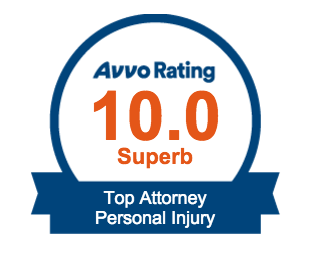Call For A Free Consultation
415-897-4801
Novato Corporate Office (Mailing Address):
10 Commercial Blvd #206 Novato, CA 94949
Offices Located In San Francisco, Oakland, San Jose, Walnut Creek, Pleasanton, Santa Rosa, Napa, Redwood City, Sacramento and Newark
Blind Spot Blunders: How Failing to Check Mirrors Leads to Lane Change Catastrophes
Changing lanes on a busy highway can be a risky maneuver. Even the most attentive drivers can make errors when moving between lanes. One of the most common mistakes is failing to properly check blind spots before initiating a lane change. This seemingly small oversight can have catastrophic consequences, leading to horrific collisions and loss of life.
The Dangers of Blind Spots
Most vehicles have substantial blind spots on both sides. These are areas that are obscured from the driver’s view, even when checking side and rearview mirrors. Blind spots typically span one to two car lengths behind and beside the vehicle. Attempting to change lanes without fully accounting for blind spots is extremely perilous.
Blind spots are particularly hazardous because other drivers have no way of knowing if they are occupying a vehicle’s blind zone. While turn signals communicate intent, the other driver cannot be sure you actually see them and may continue traveling in their lane as they have the right-of-way to do so. Failing to verify their presence leads to tragic outcomes that can leave all involved scarred for life.
Why Drivers Fail to Check Blind Spots
There are several reasons why motorists neglect to verify blind spots before changing lanes:
Distraction
Distracted driving is an epidemic on our roadways. When drivers take their eyes off the road to text, adjust music, eat, or perform other tasks, they often switch lanes out of habit without checking mirrors or blind spots. Even a split-second distraction can lead to a deadly collision.
The human brain has limited capacity to multitask. Attempting distracting secondary activities while driving severely impairs awareness, reaction times, and judgment. Drivers who think they can safely text or otherwise divert attention are fooling themselves, especially when it comes to diligent blind spot checks.
Fatigue
Drowsy drivers are impaired drivers. Fatigue slows reaction time, decreases awareness, and inhibits judgment. A fatigued driver may initiate a lane change without properly surveying adjacent lanes simply because they are too tired to remember this crucial step.
Studies show missing just two or three hours of sleep has a profound negative impact on driving ability, nearly equivalent to drinking alcohol. Driving tired dulls the senses, leading to accident risks. Trying to push through and drive while exhausted is extremely unwise.
Negligence
Some motorists are lazy when it comes to safe driving habits. They grow complacent about checking mirrors and blind spots and underestimate the dire risks of their negligence. Enforcing good driving habits requires focus and self-discipline, which careless drivers lack. Human beings are creatures of habit. Once a poor habit forms, it becomes automatic behavior. Drivers who get used to neglecting blind spot checks may not even consciously register their oversight anymore. Breaking detrimental habits demands mindfulness and concerted effort.
Aggressive Driving
Aggressive drivers are impatient and often attempt dangerous maneuvers. Unsafe lane changes are characteristic of aggressive drivers who lack caution and concern for others sharing the road. Their reckless behavior dramatically raises the probability of collisions.
Aggressive driving stems from toxic attitudes about owning the road and a lack of empathy for fellow motorists. Treatment through anger management classes may be required to permanently reform hazardous conduct. All drivers must share the roads harmoniously and patiently.
Poor Weather Conditions
Inclement weather can make it harder for drivers to see and be seen by others. This may tempt some motorists to forego checking blind spots in rain or fog. Reduced visibility requires extra diligence, not less.
Rain, snow, fog, and other conditions dictate driving well below the speed limit and using headlights and windshield wipers as appropriate. Attempting normal speeds or unsafe maneuvers during bad weather demonstrates extremely poor judgment.
Lane Change Accidents: A Closer Look
To understand the gravity of overlooking blind spots, let’s examine real-world lane change collisions and their sobering outcomes:
Sideswipe Collisions
Sideswipe crashes occur when a driver changes lanes and strikes a vehicle traveling in the adjacent lane. Most sideswipes result from blind spot errors and often lead to multi-car pile-ups. Sideswipes can be especially deadly for motorcyclists and bicyclists.
Even glancing sideswipe collisions can cause motorcycles to lose control, resulting in horrifying falls and severe injuries. Striking bicycles can similarly lead to riders being thrown onto unforgiving pavement.
Merging Mishaps
Attempting to merge onto a highway without carefully checking blind spots for oncoming traffic is a recipe for calamity. Merging collisions cause severe injuries and fatalities across the nation each year.
High-speed impacts during highway merges almost always have devastating consequences. Head-on crashes eject occupants and leave vehicles mangled beyond recognition. Survivors face a painful road to recovery.
Turning Troubles
Drivers sometimes attempt turns across multiple lanes without surveying all blind spots. Turning left or right across busy thoroughfares leads to gruesome broadside and T-bone collisions.
T-bones carry tremendous force that can cause passenger compartment intrusion, traumatic brain and spinal injuries, and vehicle rollovers. Even with airbags, T-bones often prove fatal or life-altering. Proper blind spot checks could prevent these heartbreaking tragedies.
Backing Blunders
Backing up without diligently checking rear blind spots for approaching vehicles and pedestrians causes thousands of horrific backover accidents annually. Small children are particularly vulnerable to being tragically backed over in parking lots and driveways.
A small child obscured in a vehicle’s rear blind zone could be playing joyfully one moment and crushed the next. Backovers often kill children before a parent even realizes what occurred. A few seconds taken to walk around and check all blind spots could save precious lives.
Seeking Justice After a Blind Spot Collision
If you or a loved one has been injured in an auto accident caused by a negligent driver’s blind spot error, you may have grounds for an injury claim. Our legal team has decades of experience winning compensation for accident victims. We handle cases involving blind spot crashes and all other types of collisions.
For more information, visit our offices at:
- 10 Commercial Blvd, #206 Novato, CA 94949
- 75 Broadway #202, San Francisco, CA 94111
- 3558 Round Barn Blvd, Suite 200, Santa Rosa, CA 95403
Or call us today for a free consultation on (415) 897-4801.
Want A Free Consultation?
© 2025 Rush Injury Law. All Rights Reserved.














